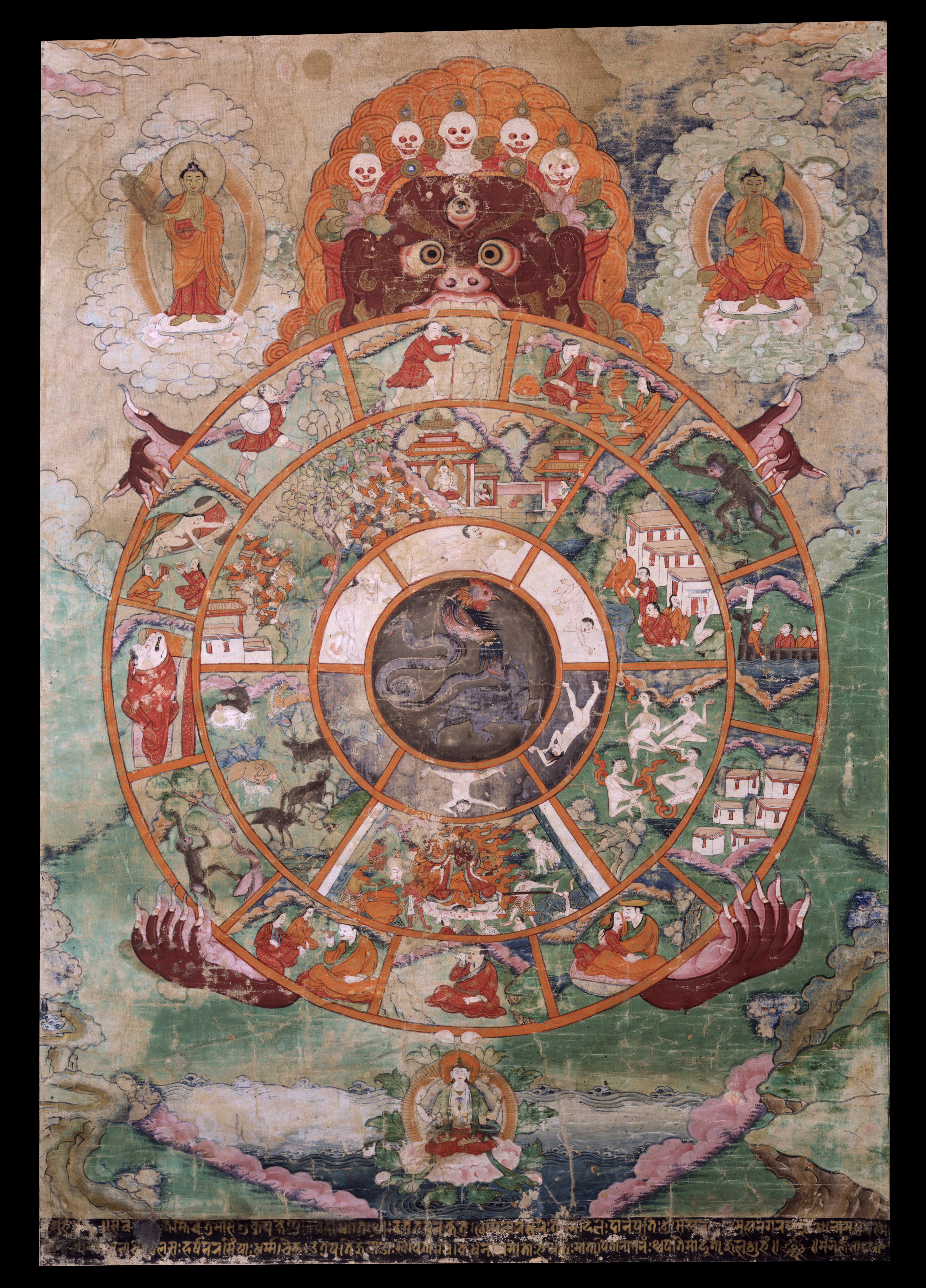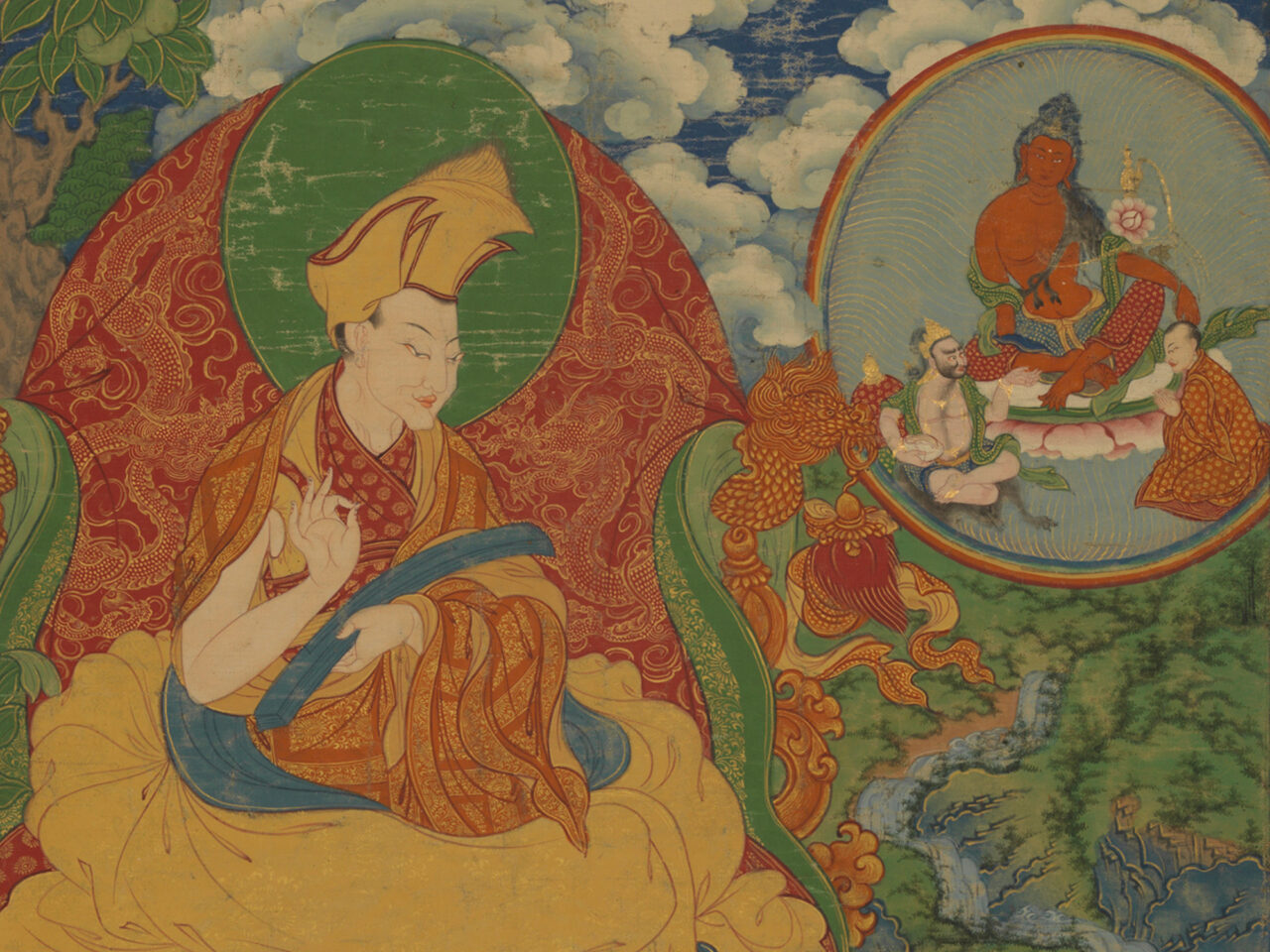Wheel of Existence
- Location
- Tibet
- Date
- 18th century
- Material
- Pigments on cloth
- Catalog Number
- F1997.40.10 (HAR 591)
- Collection
- Rubin Museum of Art
- Provenance
- Gift of the Shelley & Donald Rubin Foundation

This painting is a diagram that explains the cyclical process of life, death, and rebirth (samsara). The Lord of Death, Yama, grips a wheel driven by three animals representing the mental poisons—attachment (rooster), anger (snake), and ignorance (pig)—at its hub. In the next circle from the center, people move upward to higher states of consciousness (light) and downward to afflicted states (dark). Their actions, polluted by the poisons, propel them in a continuous cycle of rebirth in the six realms of existence, depicted in the large segments around the two inner circles. These are the realms of gods and demi-gods (top left), humans (top right), animals (lower left), hungry ghosts (lower right), and hells (bottom). The wheel’s outer rim is the symbolic chain of causality. The Buddha was able to discern the pathway out of this cycle that others can learn and follow, which is why he appears outside the wheel, at the upper left, pointing the way out by teaching the dharma. At the upper right is Maitreya, the Buddha of the Future, ready for his time on earth.

In Himalayan regions and culturally connected regions of Inner Asia the main religious traditions are Buddhism, Hinduism, and Bon.
Explore theme